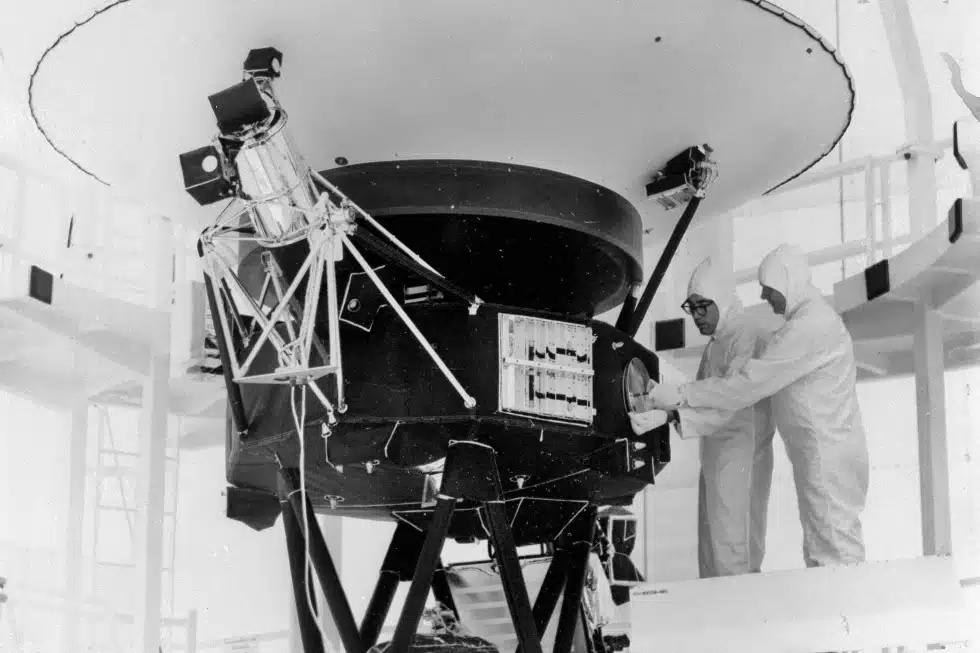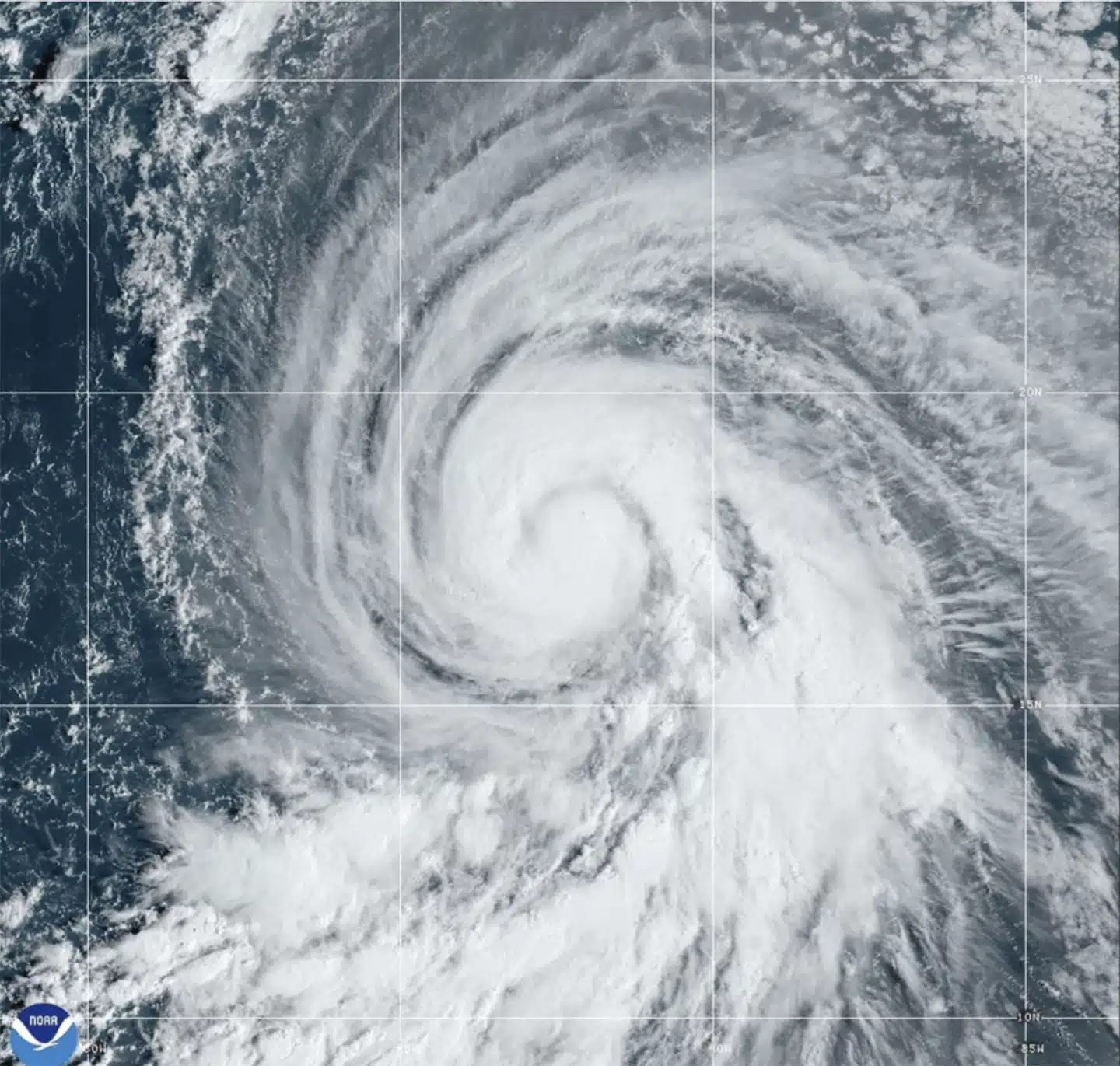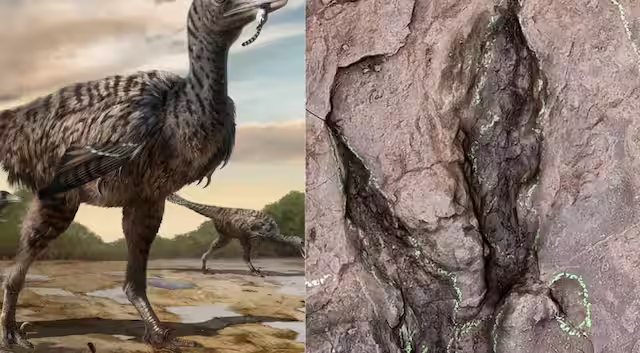Science
Saturn’s Ethereal Presence: James Webb Space Telescope Captures Enchanting Image
(CTN NEWS) – The James Webb Space Telescope (JWST) has successfully captured an extraordinary image of Saturn, presenting it as an ethereal orb accompanied by its resplendent rings shining with unprecedented brilliance.
Additionally, three of Saturn’s moons, namely Dione, Tethys, and Enceladus, can be observed in the captivating image.
According to Leigh Fletcher from the University of Leicester, UK, this particular depiction of Saturn deviates significantly from the familiar views we are accustomed to.
The absence of the distinct stripes that typically adorn Saturn’s atmosphere at deeper levels is notable in this image.
The chosen wavelength for this observation coincides with a range where methane gas present in Saturn’s atmosphere absorbs the majority of the incident sunlight, resulting in an exceptionally dark appearance.
Revealing Saturn’s Enigmatic Image through the James Webb Space Telescope
The captivating image of Saturn captured by the James Webb Space Telescope (JWST) is primarily based on near-infrared observations of the planet.
Researchers, including Fletcher, are optimistic that the JWST’s infrared detectors will unveil intricate and subtle features within Saturn’s atmosphere, rings, and moons that previous missions, like the Cassini spacecraft, might have missed.
Cassini’s last imagery of Saturn dates back to 2017, and since then, the planet has gradually inclined its rings towards Earth, assuming an edge-on position as part of its 30-year orbit.

This configuration allows both of Saturn’s poles to receive equal amounts of sunlight, reminiscent of the autumn equinox experienced on Earth.
Fletcher explains that Saturn’s distinct appearance in the image can also be attributed to the presence of infrared-sensitive aerosols located high up in its stratosphere.
These aerosols contribute to the planet’s mottled appearance, deviating from its usual banded structure. Furthermore, the brilliant white rings are the result of highly reflective ice particles that scatter and reflect sunlight.
Using Saturn’s Captured Image as a Reference for Comprehensive Exploration
Fletcher enthusiastically remarks, “It’s akin to the autumn equinox we experience here on Earth, making it an opportune moment to thoroughly explore the Saturn system once again.”
The captured image of Saturn serves as a static reference for Fletcher and his team, aiding them in identifying various features in subsequent images of the planet.
This valuable reference point enables them to discern and study Saturn’s distinct elements and formations.
Additionally, the image facilitates the examination of a prolonged exposure of Saturn and its surroundings, akin to a brief cinematic sequence.
This approach allows for the identification and analysis of smaller objects and structures in motion, including Saturn’s lesser-known moons and other dynamic phenomena.
RELATED CTN NEWS:
Apple Watch Series 8 Amazon Prime Day Deal Now Available: Get 30% Off Now!
How To See WiFi Password On Android: 3 Methods To Stay Connected In The Digital Era
How To Edit WhatsApp Messages On Android, iPhone, Windows, And Mac

Science
NASA Switches Off Instrument On Voyager 2 Spacecraft To Save Power

NEW YORK — To save power, NASA turned off another scientific equipment on its long-running Voyager 2 spacecraft.
NASA Switches Off Instrument On the Spacecraft To Save Power
The space agency announced on Tuesday that 2’s plasma science instrument, meant to study the movement of charged atoms, was turned off in late September to allow the spacecraft to continue exploring for as long as possible, which is estimated to be into the 2030s.
NASA turned off a suite of instruments on Voyager 2 and its twin, Voyager 1, after exploring the gas giant planets in the 1980s. Both are currently in interstellar space or the region between stars. The plasma instrument on Voyager 1 stopped working years ago and was finally shut off in 2007.
The remaining four instruments on 2 will continue to collect data on magnetic fields and particles. Its mission is to investigate the regions of space beyond the sun’s protective sphere.
NASA Switches Off Instrument On Voyager 2 Spacecraft To Save Power
It launched in 1977, is the only spacecraft to have visited Uranus and Neptune. It is now more than 12 billion miles (19.31 billion kilometers) from Earth. 1 is more than 15 billion miles (24.14 billion kilometers) beyond Earth.
SOURCE | AP
Science
Hurricane Kirk Could Cause Dangerous Surf Conditions Along The US East Coast

MIAMI — Hurricane Kirk’s waves could generate life-threatening surf and rip current conditions this weekend throughout the United States East Coast, as well as in Bermuda, the Greater Antilles, and the Bahamas, according to forecasters.
Kirk was a Category 3 hurricane in the middle Atlantic Ocean that might grow further but was predicted to stay away from land, according to the Miami-based National Hurricane Center on Thursday.
Hurricane Kirk Could Cause Dangerous Surf Conditions Along The US East Coast
Kirk-generated swells were forecast to reach parts of the Leeward Islands on Friday, Bermuda and the Greater Antilles on Saturday, and the East Coast and the Bahamas on Sunday, according to the center.
No coastal watches or warnings were in effect. The major storm was around 1,130 miles (1,820 kilometers) east of the Leeward Islands, with maximum sustained winds of 125 mph (205 km/h).
Meanwhile, Tropical Storm Leslie formed late Wednesday in the eastern Atlantic and is expected to strengthen into a hurricane in the following days, forecasters said. It was also not considered a threat to the land.
Hurricane Kirk Could Cause Dangerous Surf Conditions Along The US East Coast
The storm was about 540 miles (870 kilometers) southwest of Cabo Verde’s southernmost tip, with maximum sustained winds of 45 mph (75 kph), according to the center.
The storms raged in the Atlantic as rescuers in the United States Southeast sought for missing persons after Hurricane Helene struck last week, leaving a trail of death and devastation.
SOURCE | AP
Science
Giant Fossilised Footprint Of Dinosaur Found in China

(CTN News) – A team of palaeontologists believes they have discovered fossilized footprints of one of China’s largest raptors. The collection of five fossilized dinosaur footprints is half the length of a school bus.
The footprints were discovered in a dinosaur trackway in south-east China in 2020. Scientists believe dinosaurs walked over the muddy river during the Cretaceous period, leaving footprints. Some footprints have been preserved for tens of millions of years.
The dinosaur trackway was unearthed in Longxiang and is around the size of a hockey rink. Some of the footprints are unusually formed, with intact imprints of only two toes.
Fossilised footprint of megaraptor found in China

Giant fossil footprints lead to megaraptor dinosaur discovery in China
Raptors, or predatory birds, are often small and referred to as deinonychosaurs. For example, a Velociraptor is around the size of a turkey. Few raptors, such as the Utahraptor and Dakotaraptor, increased in size significantly, reaching lengths of 5 to 6 metres. The Triassic ichthyosaur was the largest raptor known until now.
According to the scientists, the predator would have attacked its prey with a pair of huge “killing claws” on each foot.
What scientists discovered recently in China is massive, far larger than the largest superpredator known to date.
Scott Persons of the College of Charleston in South Carolina, and his colleagues, added another large raptor to the list. They named it Fujianipus, and they believe it lived in East Asia some 96 million years ago.

Scott Persons at the College of Charleston in South Carolina and his colleagues added another giant raptor to the list. They named it Fujianipus, and they say it lived in East Asia about 96 million years ago. Photograph:(Twitter)
Persons and his colleagues are currently working on areas of Fujianipus’ skeleton, therefore little is known. The investigators only discovered a few of its 36-centimetre-long imprints.
“Preservation conditions were right for footprints but not so great for bones,” Persons said. However, scientists are certain that the footprints belong to a raptor because each one contains the imprint of only two toes, which corresponds to the foot anatomy of raptors. Raptors generally have three toes, but they keep one off the ground to preserve the big claw at the tip from wear and tear.
People believe Fujianipus demonstrates that raptors had the ability to grow much larger and compete with the largest predatory dinosaurs on the landscape at the time – allosauroids, some of which exceeded 10 metres or more in length.
According to Persons, raptors had an advantage over allosauroids in terms of speed. However, without fossilized leg bones, the researchers cannot correctly measure Fujianipus’ speed.
-

 News4 years ago
News4 years agoLet’s Know About Ultra High Net Worth Individual
-
Entertainment2 years ago
Mabelle Prior: The Voice of Hope, Resilience, and Diversity Inspiring Generations
-
News11 years ago
Enviromental Groups Tell Mekong Leaders Lao Dam Evaluation Process Flawed
-

 Health4 years ago
Health4 years agoHow Much Ivermectin Should You Take?
-

 Tech3 years ago
Tech3 years agoTop Forex Brokers of 2023: Reviews and Analysis for Successful Trading
-

 Lifestyles3 years ago
Lifestyles3 years agoAries Soulmate Signs
-

 Entertainment3 years ago
Entertainment3 years agoWhat Should I Do If Disney Plus Keeps Logging Me Out of TV?
-

 Health3 years ago
Health3 years agoCan I Buy Ivermectin Without A Prescription in the USA?
